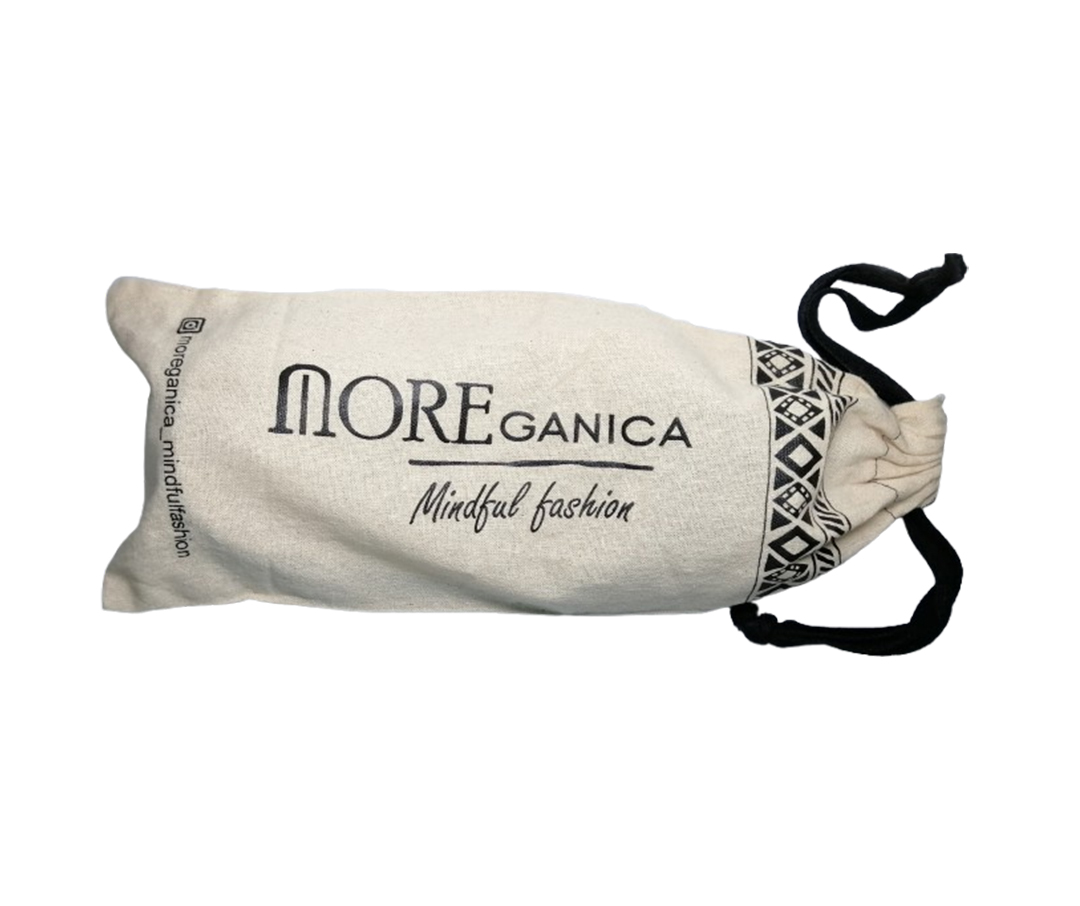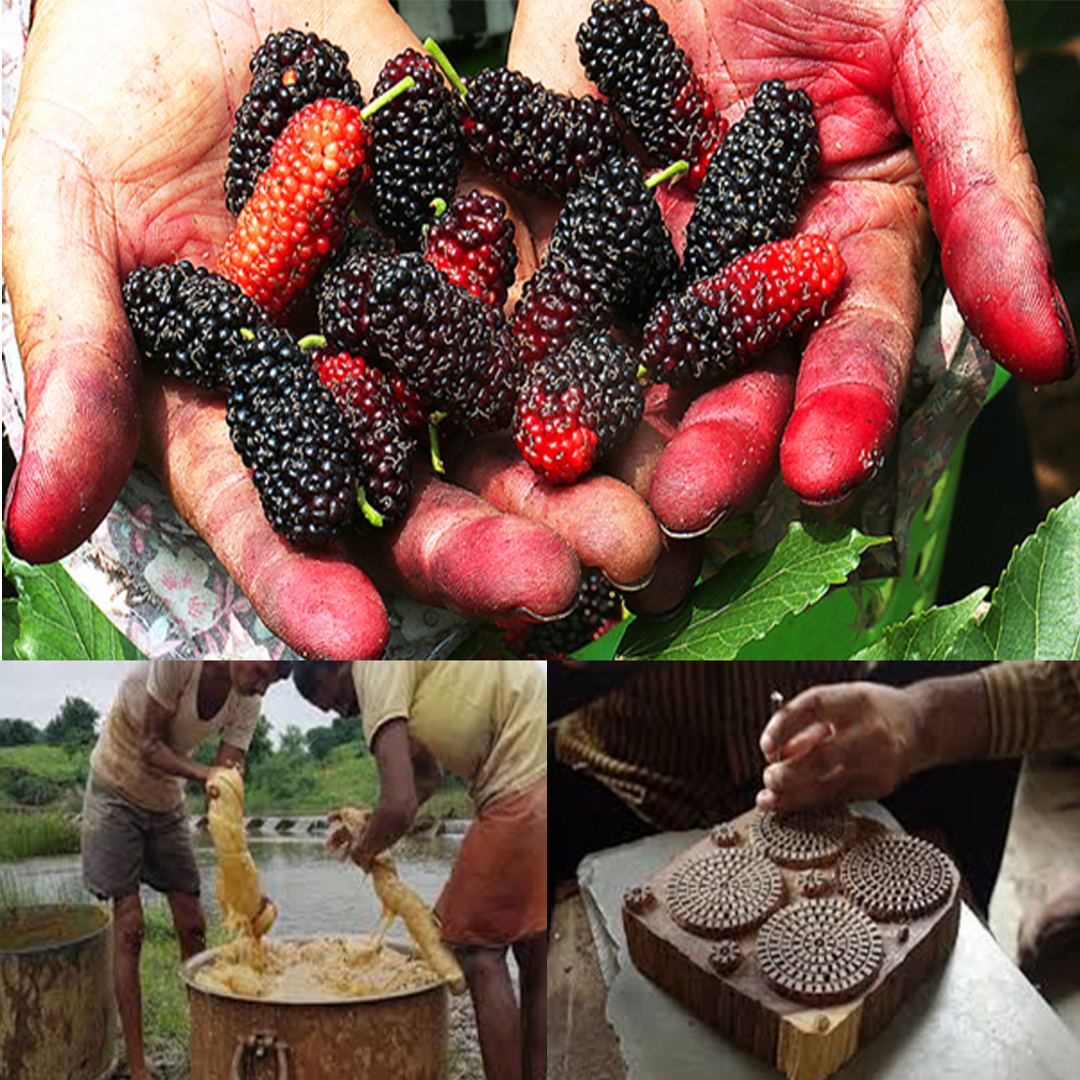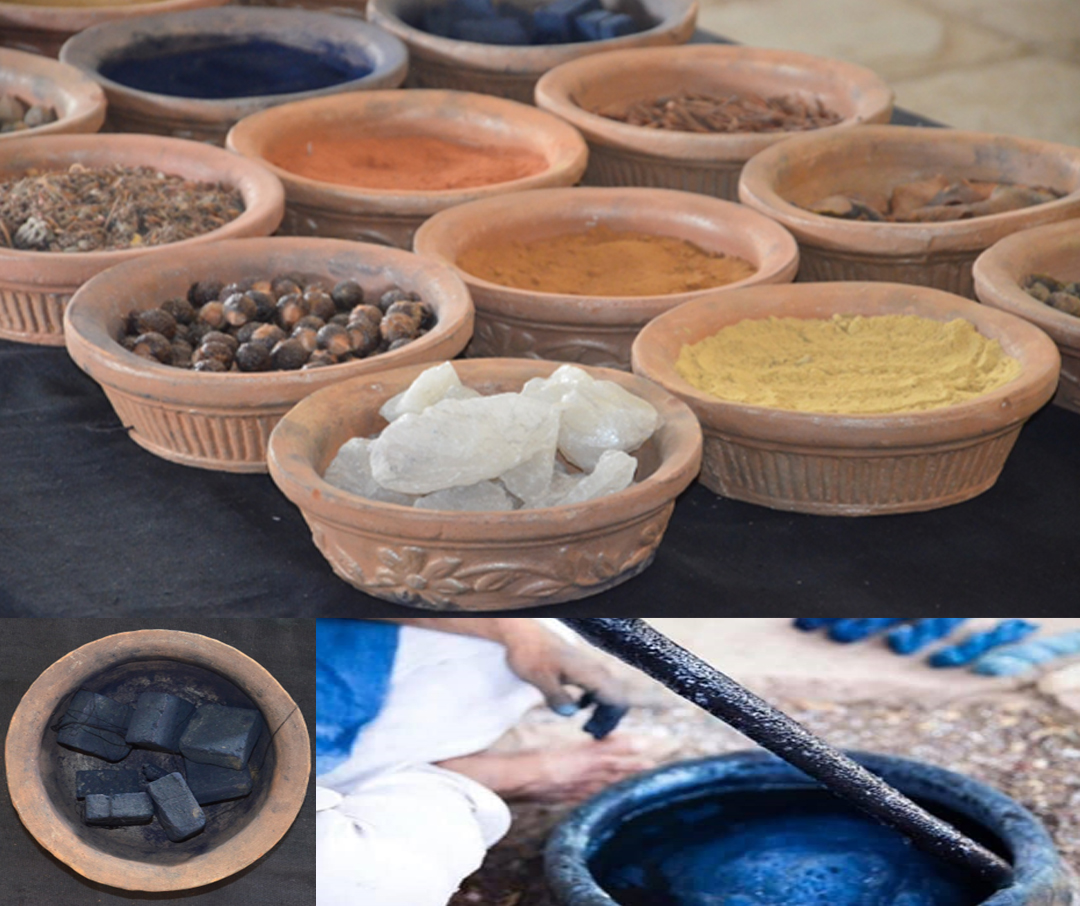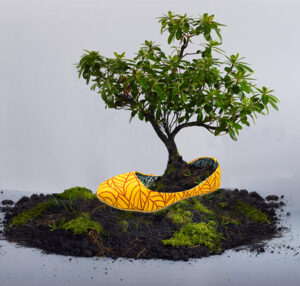ABOUT US
The MOREGANICA collection uses the traditional art of hand block printing by the Khatri community who have been masters of this craft since centuries. Natural dyes have been used to create our varied hand-crafted accessories. This collection is eco-friendly and boasts the use of block printed organic fabric in its creation. The base fabric is treated with Fuller’s earth (multani mitti), soaked in natural dyes, and hand stamped with beautifully sculpted wooden blocks using natural dyes in earth tones.
How Did Our Forefathers Create Natural Colours?
Natural dyes have been used pretty much since mankind invented fabric. The dyes that we know of today as natural dyes were discovered by accident in berries and fruits. But how did complex colours get created a century ago? These dyes are colours that are extracted from natural resources surrounding our environment; they are extracted from insects, mineral components such as iron ore, plant or parts of a plant roots, leaves, flowers, fruits and even seeds. Today, industrialization has led to the use of synthetic or chemical dyes. But colourful clothes have been worn for generations even before industrialization happened! A world that had forgotten Natural colours has woken up to these fantastic hues. An increasing curiosity for the broad range of colours that can be found in nature. A rare medium where each colour experiment is dependent upon the kind of water you use, the freshness of your materials, the mordants you use or don’t use, and the type of fibres you are dying. The exciting bit is that the ingredients used to create natural dyes, are likely already sitting in your kitchen somewhere, For Example – Turmeric, pomegranate skin, Harde etc.


India’s rich natural resources used in textiles are unrivalled. Its varied climate provides an impressive variety of plant fibres and natural dyes for the use of the dyers and printers. Each region developed its own expertise based on locally available resources such as the golden silks of Assam, the fine cottons of Bengal, or the red dyes of south-east India.
Natural dyes have been traditionally been extracted from organic and mineral sources –plant matter as well as the earth, and applied onto yarn or fabric. Dyeing methods vary from region to region. These dyes are then transferred onto organic fabric with the help of wooded blocks. Intricate and breath-taking designs are carved onto the surface of a wooden block by the very artisan who will use it to stamp the natural dye onto the fabric creating the very fabric that we use to create our products.
The Dyes and their Results: Just a few!
Avocado pits: light peachy pink on linen, light peach on silk, light blush on wool
Dhawai Flowers: light peachy pink on linen, light peach on silk, light blush on wool
Marigolds/Genda Flower: light yellow on cotton and linen, olive green when used with iron
Turmeric: A bright tangerine on linen, bright yellow when mixed with white vinegar
Yellow Onion skin: warm orange on linen
Red onion skin: Greyish purple on linen
Madder roots: Bright rust on linen, Baby pink on cotton
Indian Madder: Deep Red on cotton, light crimson on linen
Hibiscus: A cool pink on linen
Pomegranate: Muddy brown or beige on cotton
Indigo powder: Different shades of blue.
Myrobalan: shades of grey
Fermented Iron: Black
Aretha Skin: White
The art of natural colour dying and Hand wooden block printing in India
INDIGO / BLUE
Indigo is a dye that is probably the most ancient colour cultivated along the banks of the Indus River. The word Indigo comes from the Greek word Indikon - blue dye from India, referenced in the notes of Pliny the Elder, a Roman naturalist and philosopher. The production and usage of the indigo dye have been associated with the Kutch region and the Khatri community of textile artisans. Indigo in Kutch area has always been a source of pride to the people who wear it. The cooling property of that deep blue is irresistible under the harsh sun of the Raan of Kutch desert, and the Khatris believe that Indigo serves as a natural antiseptic.
Traditional Indigo dyeing process:
Large maats (terracotta urns placed in the ground) are filled with crushed leaves, lime, and salt, and left to ferment for a month. Indigo dust sediments at the bottom of these maats. The sediments are filtered and crushed to form a mixture. The perfect pH for Indigo dye is 11-12 and so lime or jaggery are added to balance the pH if and when required.
This thick mixture is tied in cotton sacks and kept under the ground where the hot sand sucks away excess water for about two months, leaving behind an Indigo cake. The Indigo cake is pounded on a stone slab with water and Acacia torta seeds /henna leaves/jaggery/date palm is added until it becomes an even, yellowish-green slurry. This is stored in underground maat to maintain the right temperature. Not all the blues in India are indigo. In the north-eastern states of Assam and Nagaland, a leafy plant known in English as Assam Indigo, in Latin as Strobilanthes cusea, in Assamese rum and in Naga osak yields a range of dark and light blues, depending partly on how shady or sunny a spot the plant grew in.


— MOREGANICA—
11Y+
Experience
100%
Quality

